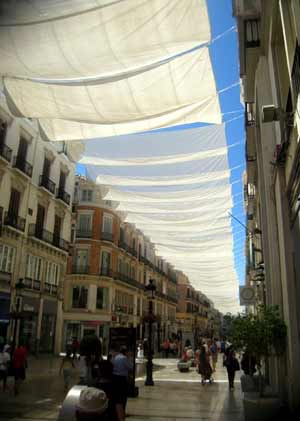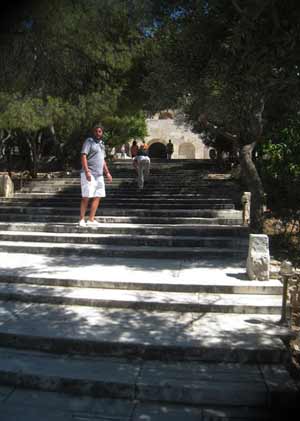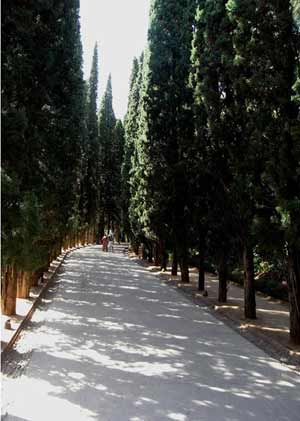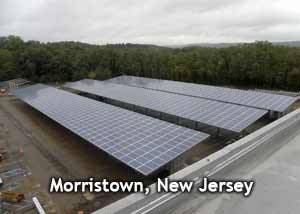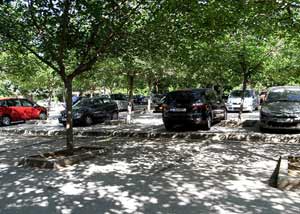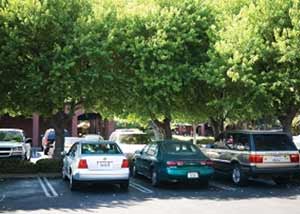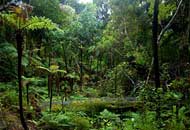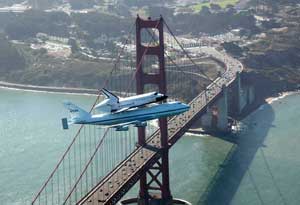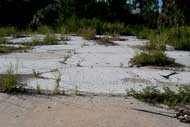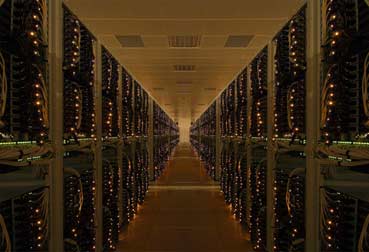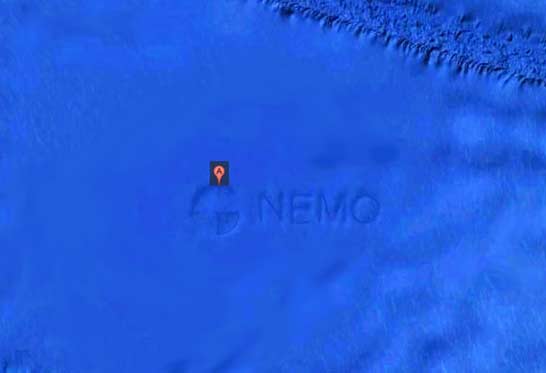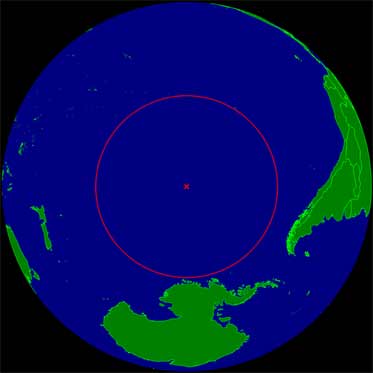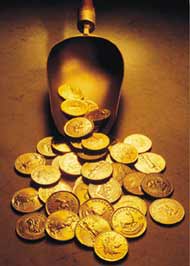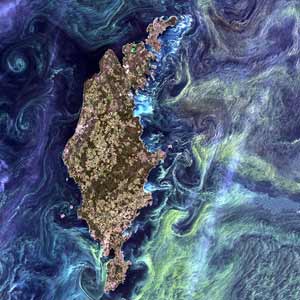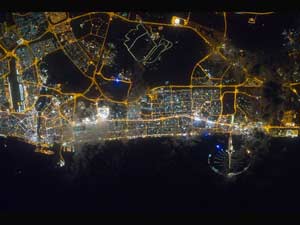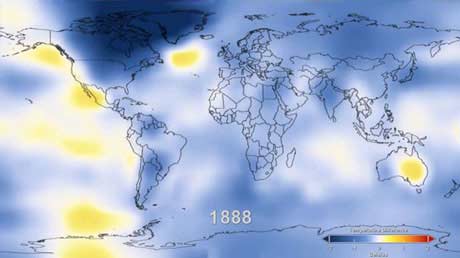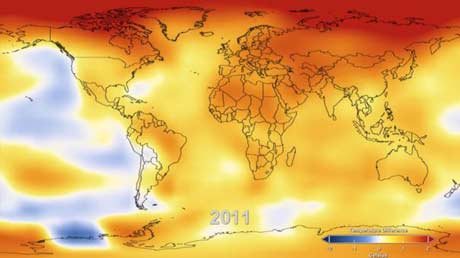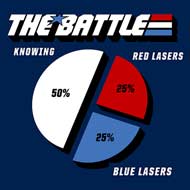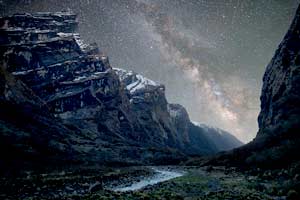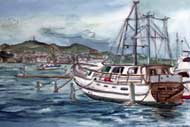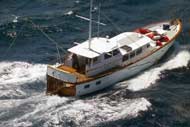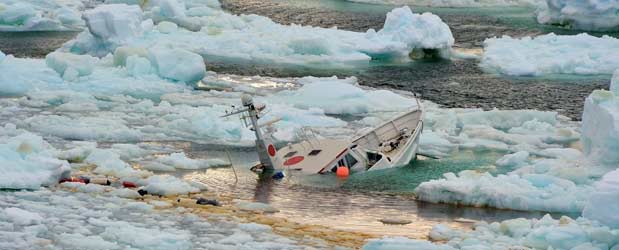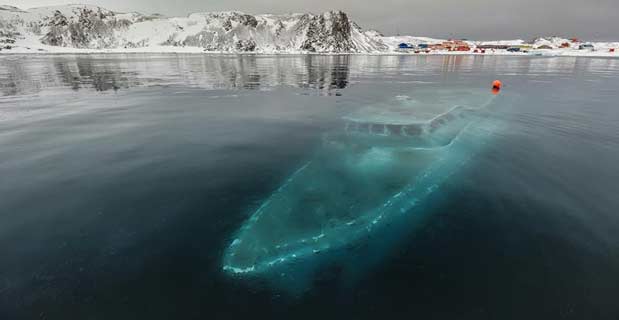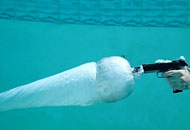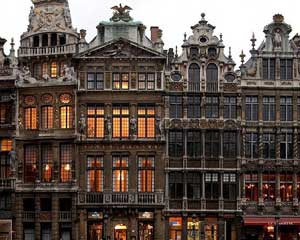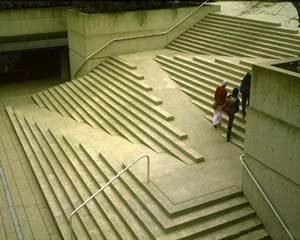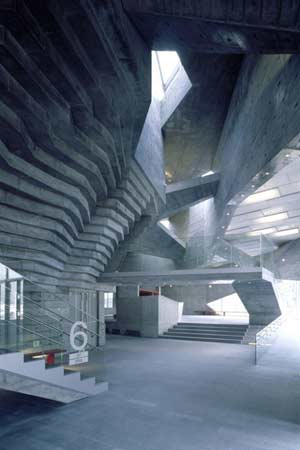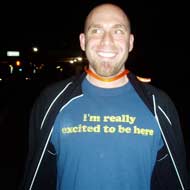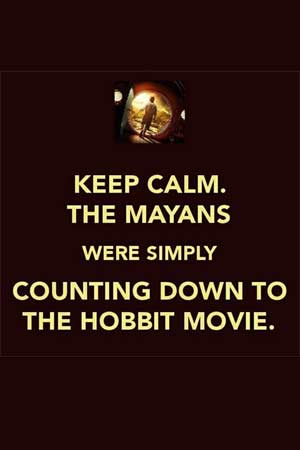The Value of Shade
There are an abundance of precedents for how the ambient temperature of a place can be improved, most of them realised with some careful contextual planning (laying out routes according to local breezes, planting shade trees, modifying building sizes and/or orientations, and so forth), but also some semi-passive applications such as having a channel with running water along the curb of a pedestrian path. The US seems to lean toward photovoltaics for shade, minimising the value of æsthetics. Perhaps in some areas trees require too much water or regular care?
- In Andalusia, Spain, the main shopping pedestrian road, Calle Marqués de la Larios in Málaga’s Old Town, is covered with large shading canvas canopies to lower the ambient temperature below. (There is another such street in Madrid). Málaga’s history stretches back to Roman and pre-Roman times. It is also famous as the home of Picasso.
- Tree-shaded steps leading up to the Acropolis, an ancient citadel located on a high rocky outcrop above the city of Athens and containing the remains of several ancient buildings of great architectural and historic significance, the most famous being the Parthenon. The word acropolis comes from two Greek words meaning “edge” and “city”.
- Tree-shaded path leading up to the Alhambra, which Moorish poets describe as “a pearl set in emeralds” in allusion to the colour of its buildings and the woods that surround them. Today, the dense nightingale-filled woods are English elms brought by the Duke of Wellington in 1812.
- New Mexico is the sunniest state in the US. Rio Grande jewelry suppliers has set up a solar grid that doubles as a car park shade (getting into your car after several hours in the New Mexico summer sun can actually be painful). The grid generates more then 1 megawatt when at full capacity (from close to 5 acres of solar panels) and the company (of course) uses it to help run their facility.
- The Morris County Improvement Authority has embarked on a 3.2 MW renewable energy programme pilot that encompasses 19 public school and county government buildings. Under the programme, known as the Morris Model, 14,000 solar panels are being installed at participating school and county government buildings. When completed, the total project will result in an energy savings of more than $3.8 million for participants. This is the Mennen Sports Arena parking lot (near where I lived in New Jersey).
- Dell commissioned a new solar-shaded parking structure of “solar trees” for their Texas headquarters. The installation has 516 individual solar panels producing more than 130 KW of solar power. On top of offering shade to 50 parking spaces and avoiding 145,000 pounds of greenhouse gas emissions per year, the new installation is also connected to two stations where electric vehicles can plug in for a quick charge. [Why do only 50 cars get covered? Are they for executives? Or are they to encourage employees to get to work early so they can grab one of the limited spots? If this is such a great idea, why doesn’t everyone get a covered parking spot?]
- A tree shaded parking area at the Alhambra. The Spanish know how to do “cool” right.
- S Street in California’s capital. Tree planting is effective in moderating elevated temperatures of surface parking lots as well as in providing associated benefits such as stormwater runoff mitigation. The Sacramento Parking Lot Ordinance, passed in 1983, has a 50% shading requirement for off-street surface parking lots within 15 years of their development. Sacramento’s shading requirement mandates tree planting — not only is “tree planting one of the most cost-effective means of mitigating urban heat islands and associated expenditures for air conditioning”, tree planting is “considered essential to moderating the heat gained by asphalt parking lots”. [Note how many SUVs are in this lot. I’ve read that even the best engineered car is no match for a car just 1/3 larger. It’s perhaps understandable how people might justify their decision to buy an SUV — though it means more fuel used and more heat generated.]
- It’s the middle of summer and the temperature is 103°F. Given a choice between a parking spot in the blazing sun and one in the shade, which one would most people choose? A shaded parking lot is good for business: studies show shaded lots lead to higher profits for local businesses and contribute to overall customer satisfaction. With parking lots occupying about 10% of land in many cities, consider the following benefits of shade: it reduces pavement temperature by 36°F; it decreases parking lot runoff containing metals, oil and grease: it lowers the temperature inside vehicles by 47°F; it reduces fuel tank temperatures by 7°F.
A lot of people in the comments for the solar-panel-covered parking spots said they thought EVERY parking lot should look like that. But my vote goes to the tree-covered ones — trees add moisture to the air and bring in birds and butterflies. I hope the MIT scientists who have mimicked photosynthesis will focus on using photosynthetic energy to power electric vehicles — then maybe we’ll see more greenery.
 Animals
Animals Animation
Animation Art of Playing Cards
Art of Playing Cards Drugs
Drugs Education
Education Environment
Environment Flying
Flying History
History Humour
Humour Immigration
Immigration Info/Tech
Info/Tech Intellectual/Entertaining
Intellectual/Entertaining Lifestyles
Lifestyles Men
Men Money/Politics/Law
Money/Politics/Law New Jersey
New Jersey Odds and Oddities
Odds and Oddities Older & Under
Older & Under Photography
Photography Prisons
Prisons Relationships
Relationships Science
Science Social/Cultural
Social/Cultural Terrorism
Terrorism Wellington
Wellington Working
Working Zero Return Investment
Zero Return Investment